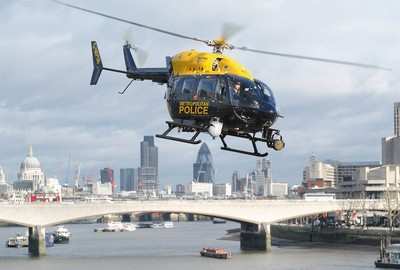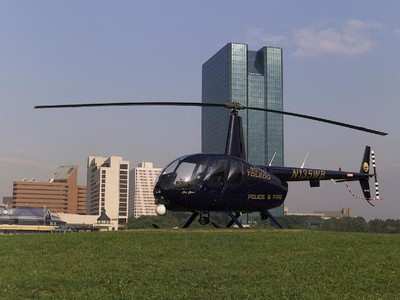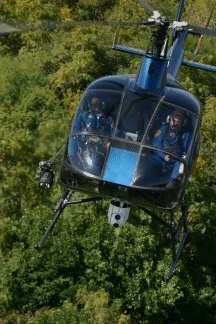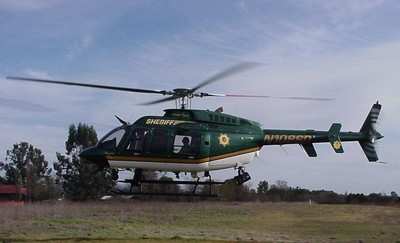Its The First National Study Of Police Use Of Aircraft
In 2007, 201 law enforcement aviation units operated nearly 900
aircraft in 46 states and the District of Columbia, according to a
report released Thursday by the Bureau of Justice Statistics (BJS)
in the Office of Justice Programs, U.S. Department of Justice.
These units, located in agencies with 100 or more sworn officers,
employed 3,400 persons and reported expenditures in 2007 of more
than $300 million to purchase, lease or finance and maintain and
fuel their aircraft. The findings are from the 2007 Census of Law
Enforcement Aviation Units, the first national study of police
units operating planes or helicopters.

Approximately 20 percent of all law
enforcement agencies with 100 or more sworn officers had aviation
units, including 44 state police agencies, 76 sheriffs' offices, 68
municipal police agencies and 13 county police agencies.
Aviation units were involved in both general, patrol-related
operations and special operations, such as emergency rescue,
counterterrorism and SWAT missions. In 2007, almost all (nine in
10) airborne law enforcement units responded to calls for service,
assisted ground units in making arrests, and engaged in foot or
vehicle pursuits. Nearly half of the aviation units (47 percent)
performed street traffic-related functions, reporting on traffic
patterns, accidents, and speed.

Eighty percent of aviation units
performed counterterrorism missions, such as conducting critical
facility checks on buildings, ports, public utilities, oil
refineries, bridges, airports and monuments. Around 90 percent of
units engaged in counternarcotics operations and performed other
criminal activity surveillance. Nearly 80 percent conducted
searches for lost or stranded hikers, boaters or skiers, and
approximately 60 percent served a firefighting function in
2007.
During 2007, the 201 aviation units conducted an estimated
384,800 missions and logged approximately 363,000 total flight
hours. State police units reported the largest number of flight
hours (137,600); municipal police units flew the most missions
(189,700).
Twenty-four percent of the units operated six or more aircraft,
60 percent operated between two and five aircraft, and 16 percent
operated one aircraft. Of the almost 900 aircraft in use in 2007,
more than twice the number of police helicopters (604) compared to
planes (295) were in operation. In half of the aviation units (50
percent), a helicopter was the only form of aircraft flown, while
just 12 percent of units flew planes only.

Nearly 70 percent of all aircraft had been purchased by the law
enforcement agencies. Approximately 25 percent had been acquired
through the Department of Defense's government surplus program,
which allows excess military equipment to be transferred to state
and local law enforcement agencies. Aviation units in sheriffs'
offices had the highest percentage of aircraft obtained through the
government surplus program (43 percent), followed by municipal
police (21 percent), county police (20 percent), and state police
aviation units (15 percent).
Nationwide, about half of the aircraft operated by these
agencies were 20 years old or older, and 20 percent of the aircraft
in the fleet were five years old or less. Aviation units in
sheriffs' offices had the highest percentage of aircraft that were
at least 20 years old or older (64 percent).

Of the 3,400 personnel assigned to the aviation units,
three-quarters were sworn officers. More than half of the personnel
were pilots, and a quarter were tactical flight officers.
Most aviation units had established safety measures, such as
having a designated safety manual (89 percent), conducting safety
meetings (90 percent), and purchasing private insurance (90
percent). Among the 201 aviation units, three aircraft accidents
were reported for 2007, with 32 being reported between 2003 and
2006.
 Bolen Gives Congress a Rare Thumbs-Up
Bolen Gives Congress a Rare Thumbs-Up The SportPlane Resource Guide RETURNS!!!!
The SportPlane Resource Guide RETURNS!!!! Buying Sprees Continue: Textron eAviation Takes On Amazilia Aerospace
Buying Sprees Continue: Textron eAviation Takes On Amazilia Aerospace Hawker 4000 Bizjets Gain Nav System, Data Link STC
Hawker 4000 Bizjets Gain Nav System, Data Link STC Echodyne Gets BVLOS Waiver for AiRanger Aircraft
Echodyne Gets BVLOS Waiver for AiRanger Aircraft






